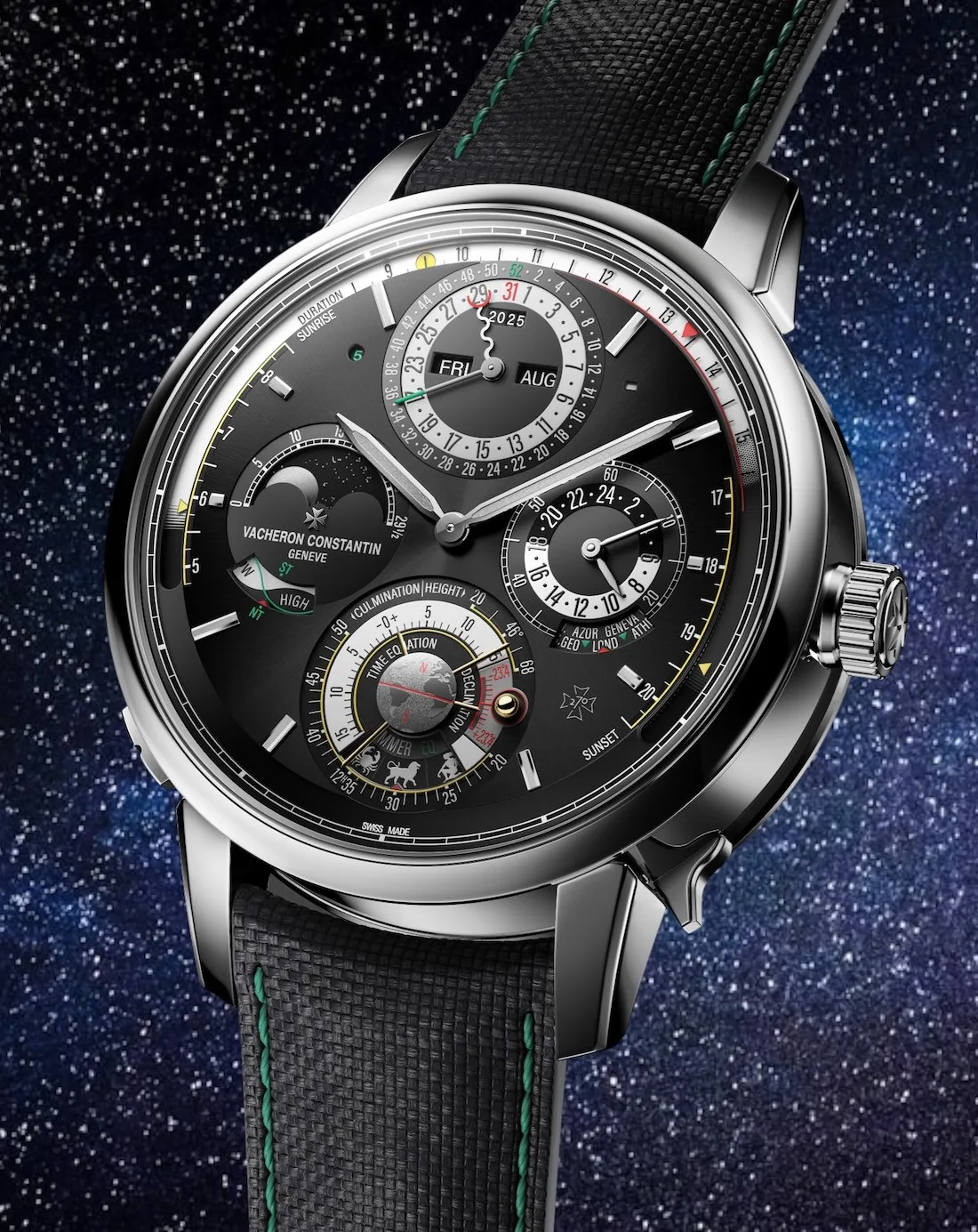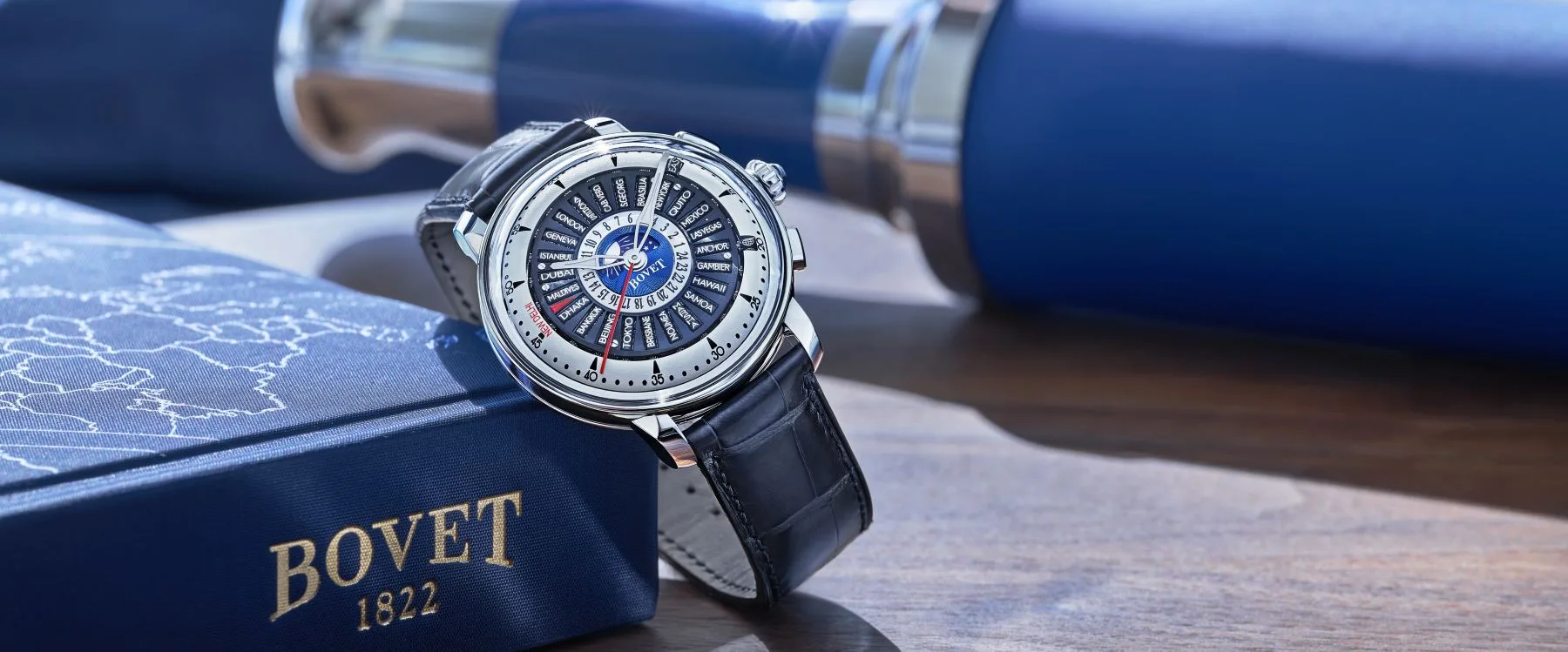There are valid reasons for a watch to be round, from the circular form of the repetitive nature of telling time to the arrangement of the mechanics beneath the dial. Despite a century of technological advancement since the dawn of the wristwatch, you find those who recognise the impact of deviating from the standard round shape, and that’s exactly what Louis Cartier did. He saw the opportunity to design something new that would reflect the advent of the 20th century. First came the square shape of the Santos-Dumont in 1904, and just two years later, the Tonneau.
Taking its name from the French for barrel, the tonneau has an elongated lozenge-type shape with parallel flat edges at the top and bottom and almost no lugs to speak of. Whereas a circle fits neatly within a square with little adjustment, the tonneau pulls the display at either end, an impression exaggerated by the tall Roman numerals and condensed minute track, within which sit two incongruously traditional pomme-shaped hands.



Left, Louis Cartier, the man who brought the tonneau shape to the world of watches. Right, a Cartier Tonneau from 1915, once the property of the photographer Baron Adolph de Meyer.
Other watch firms followed – notably Patek Philippe and Vacheron Constantin, which introduced their own versions a few years later. In the first two decades of the new century, fashion started subtle but important innovations; men donned “sack suits”, similar to modern business suits, to be worn all day. But for those who could afford it, different garments and accessories were chosen for morning, daytime and evening use, and the new tonneau case was part of the modern approach to men’s attire.
Only ever produced in precious metals, the Cartier Tonneau was a style statement for bold, trend-setting individuals eager to signal their modernity as the Belle Époque gave way to the Art Deco era. Cartier followed it in 1912 with the less radical Tortue, or “tortoise” – a squatter and more substantial take on the tonneau shape. With his first three case designs, Cartier had cemented his reputation as a maker of unconventional watches that would become icons in their own right. But the Tonneau would be overshadowed in 1917 by the arrival of the Tank, and while “shaped” watches continued to thrive at Cartier, it would be the Tank and its variants that dominated for the decades to come.
Vacheron Constantin Tonneau watch from 1915.

This is not Cartier’s story alone. Thanks to the availability of data provided by online marketplaces like Chrono24, it can be seen that the tonneau shape declined in popularity through the 1940s, ’50s and ‘60s before rising again in the ’70s. In the wider context, the same decade can be seen as the most experimental period for case design; ripples of radical, eclectic and reactionary trends that took hold in architecture, motoring and fashion spilled over into the world of watches, which was also striving to stand out against the threat of new technology. It’s here that we find a different kind of tonneau – one that might not even fit some people’s expectations of the term. The sporty tonneau was epitomised by the Heuer Viceroy Autavia Ref. 1163V and the Omega Speedmaster Mark II, both of which first saw the light of day in 1969.
The emergence of a of modified form of the original tonneau derives from the more traditional styled racing chronographs of the 1960s. At Heuer, the case design for both the Carrera and the Autavia changed with the introduction of the brand’s first automatic chronograph movement. These two, together with the Monaco – the poster boy for the new technology – emphasised a break with the past. While attention focussed mainly on the repositioning of the crown, diagonal chronograph pushers and the bold use of colour across the dials, the change in silhouette played its own part.
During the 1970s sending in proof of purchase for 10 packs of Viceroy cigarettes would get you a Heuer Autavia for only $88.

The era of tonneau designs was not destined to last long either. With the quartz crisis of the mid-1970s, changes to the designs of solidly established models at Heuer, Omega and elsewhere came to be seen as a desperate last roll of the dice. Even in its own history book, Ahead of Its Time, TAG Heuer describes the Carrera of the era as reflecting the company’s mounting panic, with “new looks rushed to market” and, “in 1974, a new, larger, even more ponderous tonneau-shaped case with hooded lugs.” An attempt to revive the look once more, in 1978, with “a reworked version of the early-1970s tonneau case” was “hampered by high costs at home and cheap manufacturing abroad… not a success.”
These are factors far beyond the simple question of case shape. Yet the anecdotes serve to make a point: as the wristwatch has risen and fallen in popularity, the tonneau has always had a certain appeal to designers and brands in need of an eye-catching look.

The tonneau-shaped case of the Omega Speedmaster II from 1969.
In the early 1990s, when a young maverick watchmaker by the name of Franck Muller began his rise to prominence, he chose the tonneau shape for some of his first models. Today the brand is synonymous with a very modern take on the design – a much larger, thicker, execution known as the Curvex. But it was not always part of the plan, as Franck Muller CEO Nicholas Rudaz explains. “Franck was a watchmaker producing very complicated pieces before he created Franck Muller Genève in 1992. One day, while delivering a watch, a client’s wife asked him to design one for her. Franck was very stressed and concerned about it, because he only knew how to make complications. He didn’t know about that kind of design.”
Franck Muller Vanguard Skeleton with a sapphire crystal case, manual-winding movement and a black alligator leather strap with pin buckle.

If you were thinking that perhaps Muller turned his thoughts to the golden era of elegance and took his inspiration from Cartier’s 1906 original, you would not be completely wrong. He loves Art Deco designs, but there is a more specific source of inspiration. According to Rudaz, “Franck thought about the lady who had asked him to produce the watch, and the femininity of her curves, and that was the inspiration for the Curvex case, which is bowed in two directions – from 12 to 6 and 3 to 9.” Last year, the new Curvex CX modernised the tonneau once more, elongating the design and pushing the sapphire crystal almost to its edges. “It’s very comfortable to wear but complicated to make,” Rudaz adds. “To get the shape, you need a lot more material; there’s more wastage, which has to be reclaimed and recycled.”
Along with Franck Muller, the other great proponent of the revival of the tonneau in the early 21st century was Richard Mille. Combining the avant-garde case shape with its investment in polymer-based materials has redefined how a luxury watch can be made. From the RM001 in 2001, the tonneau has become the hallmark of the RM brand, and shorthand for the associations Mille forges across industries – most significantly with the aerospace sector, whence some of the material innovation derives.

Richard Mille RM009 showing the tonneau case with its modern form resembling the profile of a wing.
Mille himself has compared the tonneau curvature to a cross-section of a wing of a plane or a Formula 1 car. Over the last two decades, Richard Mille cases have been created in carbon nanotube polymers, high-tech metal-ceramic alloys, thin-ply quartz fibre and, most daringly of all, solid sapphire. The design needed tolerances at a micron level, and this required the construction of a proprietary type of screw to hold the three parts of the case together. The end result was a completely rethought and invigorated tonneau, which kept evolving over the years, turning it from dress-watch minimalism to an ergonomic, high-performance form.
Cartier Tonneau Skeleton XL in rose gold with the Dual Time Zone complication: two distinct hour and minute indicators, dials formed by skeletonised bridges.

Cartier, meanwhile, judged that the time was right for the classic tonneau to reappear. It tested the waters at the end of the 20th century with a platinum-cased limited edition that was produced under the auspices of its relatively short-lived and much-admired CPCP (Collection Privée Cartier Paris) programme. Seven years later, Cartier committed to a fuller revival of the tonneau in time for its centenary, bringing it back into the main collection as a dress watch in the original vein. Twelve years on, a more daring version would surface as the Tonneau Dual Time Skeleton XL. This head-turning design is hardly comparable to the high-tech polymer creations of Richard Mille, or the Damascus steel showstopper of Franck Muller’s Vanguard, but one has to wonder whether it would have existed at all without these contemporary watchmakers pushing the boundaries.
Words: Chris Hall
Opening picture: Soscenic Photography (Pexels)

















Show Comments +